Nissan Armada 2004 Owner's Manual
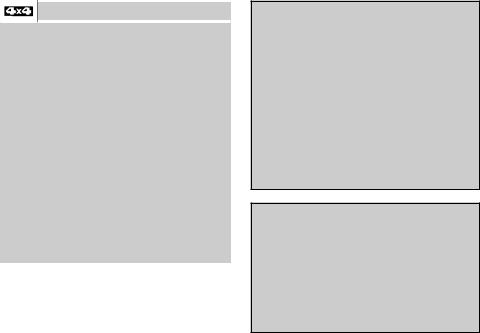
FOREWORD |
READ FIRST—THEN DRIVE SAFELY |
Welcome to the growing family of new NISSAN owners. This vehicle is delivered to you with confidence. It was produced using the latest techniques and strict quality control.
This manual was prepared to help you understand the operation and maintenance of your vehicle so that you may enjoy many miles (kilometers) of driving pleasure. Please read through this manual before operating your vehicle.
A separate Warranty Information Booklet explains details about the warranties covering your vehicle. The “NISSAN Service and Maintenance Guide” explains details about maintaining and servicing your vehicle. Additionally, a separate Customer Care/Lemon Law Booklet (U.S. only) will explain how to resolve any concerns you may have with your vehicle, as well as clarify your rights under your state’s lemon law.
Your NISSAN dealership knows your vehicle best. When you require any service or have any questions, they will be glad to assist you with the extensive resources available to them.
Before driving your vehicle please read this Owner’s Manual carefully. This will ensure familiarity with controls and maintenance requirements, assisting you in the safe operation of your vehicle.
WARNING
IMPORTANT SAFETY INFORMATION REMINDERS FOR SAFETY!
Follow these important driving rules to help ensure a safe and comfortable trip for you and your passengers!
cNEVER drive under the influence of alcohol or drugs.
cALWAYS observe posted speed limits and never drive too fast for conditions.
cALWAYS use your seat belts and appropriate child restraint systems. Pre-teen children should be seated in the rear seat.
cALWAYS provide information about the proper use of vehicle safety features to all occupants of the vehicle.
cALWAYS review this owner’s manual for important safety information.
For descriptions specified for four-wheel drive models, a mark is placed at the beginning of the applicable sections/items.
As with other vehicles with features for off-road use, failure to operate four-wheel
drive models correctly may result in loss of control or an accident. Be sure to read “Driving safety precautions” in the “Starting and driving” section of this manual.
ON-PAVEMENT AND OFF-ROAD DRIVING
This vehicle will handle and maneuver differently from an ordinary passenger car because it has a higher center of gravity for off-road use. As with other vehicles with features of this type, failure to operate this vehicle correctly may result in loss of control or an accident.
Be sure to read “On-pavement and offroad driving precautions”, and “Avoiding collision and rollover”, and “Driving safety precautions”, in the “Starting and driving” section of this manual.
MODIFICATION OF YOUR VEHICLE This vehicle should not be modified. Modification could affect its performance, safety or durability, and may even violate governmental regulations. In addition, damage or performance problems resulting from modifications may not be covered under NISSAN warranties.

WHEN READING THE MANUAL
This manual includes information for all options available on this model. Therefore, you may find some information that does not apply to your vehicle.
All information, specifications and illustrations in this manual are those in effect at the time of printing. NISSAN reserves the right to change specifications or design without notice and without obligation.
IMPORTANT INFORMATION ABOUT THIS MANUAL
You will see various symbols in this manual. They are used in the following ways:
WARNING
This is used to indicate the presence of a hazard that could cause death or serious personal injury. To avoid or reduce the risk, the procedures must be followed precisely.
CAUTION
This is used to indicate the presence of a hazard that could cause minor or moderate personal injury or damage to your vehicle. To avoid or reduce the risk, the procedures must be followed carefully.
APD1005
If you see this symbol, it means “Do not do this” or “Do not let this happen.”
If you see a symbol similar to these in an illustration, it means the arrow points to the front of the vehicle.
Arrows in an illustration that are similar to these indicate movement or action.
Arrows in an illustration that are similar to these call attention to an item in the illustration.
CALIFORNIA PROPOSITION 65 WARNING
WARNING
Engine exhaust, some of its constituents, and certain vehicle components contain or emit chemicals known to the State of California to cause cancer and birth defects or other reproductive harm. In addition, certain fluids contained in vehicles and certain products of component wear contain or emit chemicals known to the State of California to cause cancer and birth defects or other reproductive harm.
© 2004 NISSAN NORTH AMERICA, INC.
GARDENA, CALIFORNIA
All rights reserved. No part of this Owner’s Manual may be reproduced or stored in a retrieval system, or transmitted in any form, or by any means, electronic, mechanical, photocopying, recording or otherwise, without the prior written permission of Nissan North America, Inc., Gardena, California.

WELCOME TO THE WORLD OF NISSAN
|
WFW0014 |
|
Your new NISSAN is the result of our dedication to |
styling design at Nissan Design America, Inc. in San |
|
produce the finest in safe, reliable and economical |
Diego, California, and engineering at Nissan Tech- |
|
transportation. Your vehicle is the product of a suc- |
nical Center North America in Farmington Hills, |
|
cessful worldwide company that manufactures cars |
Michigan. Additionally, NISSAN employs more than |
|
and trucks in over 17 countries and distributes them |
21,000 people throughout the United States, |
|
in 170 nations. |
Canada, and Mexico. An additional 60,000 people |
|
NISSAN vehicles are designed and manufactured |
work for the 1,250 NISSAN and INFINITI dealers |
|
by Nissan Motor Co., Ltd. which was founded in |
across North America. |
|
Tokyo, Japan in 1933, and NISSAN affiliates world- |
NISSAN is also a substantial contributor to the |
|
wide, collectively growing to become the fifth largest |
||
Canadian economy. Nissan Canada Inc., its suppli- |
||
automaker in the world. In addition to cars and |
||
ers and over 150 dealers employ approximately |
||
trucks, NISSAN also makes forklift trucks, marine |
||
4,500 people. These include company employees |
||
engines, boats and other diversified products. |
||
and the staffs of NISSAN dealers all across Canada. |
||
NISSAN has made a substantial and growing in- |
||
In addition, many Canadians work for companies |
||
vestment in North America. NISSAN’s commitment |
that supply NISSAN and NISSAN dealers with ma- |
|
is over $6 billion dollars in capital investments in |
terials and services ranging from the operation of |
|
facilities across the continent. Some of the facilities |
||
port facilities and transportation services, to the |
||
include the Nissan Manufacturing facilities in Can- |
||
supply of lubricants, parts and accessories. |
||
ton, Mississippi and in Smyrna, Tennessee, vehicle |
||
|
NISSAN pioneered the use of electronics and computers in automobiles, and has led the industry in improving both performance and fuel efficiency through new engine designs and the use of synthetic materials to reduce vehicle weight. The company has also developed ways to build quality into its vehicles at each stage of the production process, both through extensive use of automation and — most importantly — through an awareness that people are the central element in quality control.
From the time the parts arrived from our suppliers until you took delivery of your new NISSAN, dozens of checks were made to ensure that only the best job was being done in producing and delivering your vehicle. NISSAN also takes great care to ensure that when you take your NISSAN to your dealer for maintenance, the service technician will perform his work according to the quality standards that have been established by NISSAN.
Safety has also been built into your NISSAN. As you know, seat belts are an integral part of the safety systems that will help protect you and your passengers in the event of a sudden stop or an accident. We urge you to use the seat belts every time you drive the vehicle.
The NISSAN story of growth and achievement reflects our major goal: to provide you, our customer, with a vehicle that is built with quality and craftsmanship — a product that we can be proud to build and you can be proud to own.
NISSAN CUSTOMER CARE PROGRAM
NISSAN CARES . . .
Both NISSAN and your NISSAN dealer are dedicated to serving all your automotive needs. Your satisfaction with your vehicle and your NISSAN dealer are our primary concerns. Your NISSAN dealer is always available to assist you with all your automobile sales and service needs.
However, if there is something that your NISSAN dealer cannot assist you with or you would like to provide NISSAN directly with comments or questions, please contact the NISSAN Consumer Affairs Department using our toll-free number:
For U.S. mainland and Alaska customers
1-800-NISSAN-1 (1-800-647-7261)
For Hawaii customers
1-808-836-0888 (Oahu Number)
For Canadian customers
1-800-387-0122
The Consumer Affairs Department will ask for the following information:
–Your name, address, and telephone number
–Vehicle identification number (attached to the top of the instrument panel on the driver’s side)
–Date of purchase
–Current odometer reading
–Your NISSAN dealer’s name
–Your comments or questions
OR
You can write to NISSAN with the information at:
For U.S. mainland and Alaska customers
Nissan North America, Inc. Consumer Affairs Department P.O. Box 191
Gardena, California 90248-0191
For Hawaii customers
Nissan Motor Corporation in Hawaii 2880 Kilihau St.
Honolulu, Hawaii 96819
For Canadian customers
Nissan Canada Inc.
5290 Orbitor Drive Mississauga, Ontario L4W 4Z5
We appreciate your interest in NISSAN and thank you for buying a quality NISSAN vehicle.
Table of
Contents
Illustrated table of contents |
|
0 |
|
|
|
|
|
|
Safety—Seats, seat belts and supplemental air bags |
|
1 |
|
|
|
|
|
|
Instruments and controls |
|
2 |
|
|
|
|
|
|
Pre-driving checks and adjustments |
|
3 |
|
|
|
|
|
|
Display screen, heater, air conditioner and audio systems |
|
4 |
|
|
|
|
|
|
Starting and driving |
|
5 |
|
|
|
|
|
|
In case of emergency |
|
6 |
|
|
|
|
|
|
Appearance and care |
|
7 |
|
|
|
|
|
|
Maintenance and do-it-yourself |
|
8 |
|
|
|
|
|
|
Technical and consumer information |
|
9 |
|
|
|
Index |
|
10 |
|
|
|

0 Illustrated table of contents
Airbags, seat belts and child restraints . . . . . . . . . . . . . . . 0-2 Exterior front . . . . . . . . . . . . . . . . . . . . . . . . . . . . . . . . . . . . . . 0-3 Exterior rear. . . . . . . . . . . . . . . . . . . . . . . . . . . . . . . . . . . . . . . 0-4 Passenger compartment . . . . . . . . . . . . . . . . . . . . . . . . . . . 0-5
Instrument panel. . . . . . . . . . . . . . . . . . . . . . . . . . . . . . . . . . . 0-6 Engine compartment locations . . . . . . . . . . . . . . . . . . . . . . 0-8 Warning/indicator lights . . . . . . . . . . . . . . . . . . . . . . . . . . . . 0-9

AIRBAGS, SEAT BELTS AND CHILD
RESTRAINTS
1. 3rd row bench seat belts (P. 1-32) 2. 2nd row seat belts (P. 1-32)
3. Supplemental curtain side-impact and rollover air bags (P. 1-14)
4. Front seat belts (P. 1-32)
5. Supplemental front impact air bags
(P.1-14)
6. Seats (P. 1-2)
7. Occupant classification sensor (weight sensor) (P.1-22)
8. Seat belt pretensioners (P. 1-28)
9. Supplemental side impact air bag (if so equipped) (P. 1-14)
10. LATCH (Lower Anchors and Tethers for CHildren) (P. 1-57)
11. Top tether strap anchor (P. 1-59)
See the page number indicated in parentheses for operating details.
LII0021
0-2 Illustrated table of contents

EXTERIOR FRONT
1. Engine hood (P. 3-10)
2. Windshield wiper and washer switch (P. 2-22)
3. Windshield (P. 8-18)
4. Power windows (P. 2-46)
5. Door locks, keyfob, keys (P. 3-3, 3-5, 3-2)
6. Mirrors (P. 3-18)
7. Tire pressure (P. 9-11)
8. Flat tire (P. 6-2)
9. Tire chains (P. 8-36)
10. Replacing bulbs (P. 8-27)
11. Headlight and turn signal switch (P. 2-25)
12. Fog light switch (P. 2-28)
13. Tow hooks (if so equipped) (P. 6-12)
See the page number indicated in parentheses for operating details.
LII0020
Illustrated table of contents 0-3

EXTERIOR REAR
1. Roof rack (P. 2-45)
2. Vehicle loading (P. 9-12)
3. Glass hatch (P. 3-15)
4. Rear window washer (P.2-23)
5. Glass hatch release (P.3-15)
6. Back door release (P. 3-14)
7. Replacing bulbs (P. 8-27)
8. Fuel filler cap, fuel recommendation (P. 3-15, P. 9-3)
9. Fuel filler door (P. 3-15)
See the page number indicated in parentheses for operating details.
LII0019
0-4 Illustrated table of contents

PASSENGER COMPARTMENT
1. Rear ventilators (P. 4-11
2. Storage (P. 2-34)
3. DVD entertainment system (if so equipped) (P. 4-41)
4. Sunroof (if so equipped) (P. 2-49)
5. Map lights (P. 2-53)
6. Sun visors (P. 3-17)
7. HomeLinkT (P. 2-53)
8. Glove box (P. 2-34)
9. Seats (P. 1-2)
10. Cup holders (P. 2-38)
11. Luggage storage (P. 2-42)
See the page number indicated in parentheses for operating details.
LII0022
Illustrated table of contents 0-5

INSTRUMENT PANEL
WIC0646
1.Driver, center and passenger vents (P. 4-11)
2.Instrument brightness control (P. 2-27)
3.Headlight and turn signal switch (P. 2-25)
4.Steering wheel switch for audio control (if so equipped) (P. 4-38)
5.Driver supplemental air bag/horn (P. 1-14, P. 2-29)
6.Meters, gauges and warning/indicator lights (P. 2-3, 2-12)
7.Cruise control main/set switches (P. 5-14)
8.Windshield wiper/washer switch and rear window wiper/washer switch (P. 2-22, 2-23)
9.Ignition switch (P. 5-7)
10.Navigation system* (if so equipped) (P. 4-2)
11.Navigation system* controls (if so equipped) (P. 4-2)
12.Audio system controls (P. 4-27, 4-32)
13.Front passenger supplemental air bag (P. 1-14)
14.Glove box (P. 2-36)
15.Climate controls (P. 4-12, 4-21)
16.Aux jack (P. 4-37)
0-6 Illustrated table of contents
17.Heated seat switch (if so equipped) (P. 2-29)
18.Power outlet (P. 2-32)
19.Vehicle dynamic control (VDC) off switch (P. 2-30)
20.Tow mode switch (P. 2-31)
21.Shift selector lever (P. 5-9)
22.Passenger air bag status light (P. 1-24)
23.Hazard lights (P. 2-28)
24.4WD shift switch (if so equipped) (P.5-17)
25.Tilt steering wheel control (P. 3-16)
26.Rear sonar system off switch (if so equipped) (P. 2-31)
27.Pedal position adjustment switch (P. 3-17)
28.Back door open/close switch (if so equipped) (P. 3-10)
*: Refer to the separate Navigation System Owner’s Manual (if so equipped).
See the page number indicated in parentheses for operating details.
Illustrated table of contents 0-7

ENGINE COMPARTMENT LOCATIONS
1. Battery (P. 8-13)
2. Fuse/fusible link box (P. 8-22)
3. Transmission dipstick (P. 8-11)
4. Engine oil filler cap (P. 8-8)
5. Brake fluid reservoir (P. 8-12)
6. Windshield washer fluid reservoir (P. 8-12)
7. Air cleaner (P. 8-16)
8. Radiator cap (P. 8-7)
9. Power steering fluid reservoir (P. 8-11)
10. Engine oil dipstick (P. 8-8)
11. Coolant reservoir (P. 8-7)
See the page number indicated in parentheses for operating details.
LDI0368
0-8 Illustrated table of contents
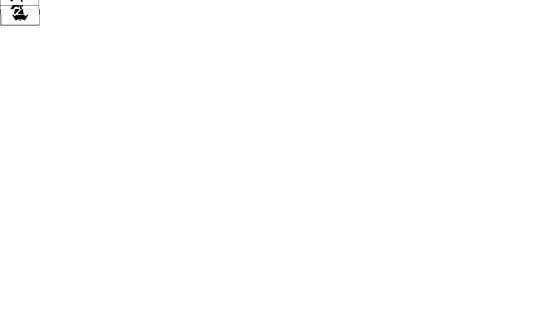
WARNING/INDICATOR LIGHTS
Warning |
Name |
Page |
light |
|
|
|
|
|
|
Anti-lock brake |
2-13 |
or |
warning light |
|
|
|
|
|
|
|
|
Automatic |
2-13 |
|
transmission |
|
|
check warning |
|
|
light |
|
|
|
|
|
Automatic |
2-13 |
|
transmission |
|
|
park warning |
|
|
light ( |
|
|
model) |
|
|
|
|
|
Brake warning |
2-13 |
or |
light |
|
|
|
|
|
|
|
Warning |
Name |
Page |
light |
|
|
|
|
|
|
Charge warning |
2-14 |
|
light |
|
|
|
|
|
Check suspen- |
2-14 |
|
sion warning |
|
|
light (if so |
|
|
equipped) |
|
|
|
|
|
Door open |
2-14 |
|
warning light |
|
|
|
|
|
Engine oil pres- |
2-14 |
|
sure low/engine |
|
|
coolant tem- |
|
|
perature high |
|
|
warning light |
|
|
|
|
|
4WD warning |
2-15 |
|
light ( |
|
|
model) |
|
|
|
|
|
Low fuel warn- |
2-15 |
|
ing light |
|
|
|
|
Warning |
Name |
Page |
light |
|
|
|
|
|
|
Low tire pres- |
2-15 |
|
sure warning |
|
|
light |
|
|
|
|
|
Low windshield |
2-16 |
|
washer fluid |
|
|
warning light |
|
|
|
|
|
Seat belt warn- |
2-16 |
|
ing light and |
|
|
chime |
|
|
|
|
|
Supplemental |
2-16 |
|
air bag warning |
|
|
light |
|
|
|
|
Illustrated table of contents 0-9

Indicator |
Name |
Page |
light |
|
|
|
|
|
|
Automatic |
2-17 |
|
transmission |
|
|
position indica- |
|
|
tor light |
|
|
|
|
|
Cruise main |
2-17 |
|
switch indicator |
|
|
light |
|
|
|
|
|
Cruise set |
2-17 |
|
switch indicator |
|
|
light |
|
|
|
|
|
4WD shift indi- |
2-17 |
|
cator light |
|
|
( |
|
|
model) |
|
|
|
|
|
Front passenger |
2-17 |
or |
air bag status |
|
light |
|
|
|
|
|
|
|
|
Indicator |
Name |
Page |
light |
|
|
|
|
|
|
High beam in- |
2-17 |
|
dicator light |
|
|
(Blue) |
|
|
|
|
|
Malfunction |
2-17 |
|
indicator lamp |
|
|
(MIL) |
|
|
|
|
|
Security indica- |
2-18 |
|
tor light (NVIS) |
|
|
|
|
|
Slip indicator |
2-18 |
|
light |
|
|
|
|
|
Transfer 4LO |
2-18 |
|
position indica- |
|
|
tor light |
|
|
( |
|
|
model) |
|
|
|
|
|
Turn |
2-19 |
|
signal/hazard |
|
|
indicator lights |
|
|
|
|
Indicator |
Name |
Page |
light |
|
|
|
|
|
|
Vehicle dy- |
2-19 |
|
namic control |
|
|
off indicator |
|
|
light |
|
|
|
|
0-10 Illustrated table of contents

1 Safety—Seats, seat belts and supplemental air bags
Seats . . . . . . . . . . . . . . . . . . . . . . . . . . . . . . . . . . . . . . . . . . . . 1-2
Front manual seat adjustment — passenger
side. . . . . . . . . . . . . . . . . . . . . . . . . . . . . . . . . . . . . . . . . . . 1-2
Front power seat adjustment (for driver’s seat and if so equipped for passenger’s
seat) . . . . . . . . . . . . . . . . . . . . . . . . . . . . . . . . . . . . . . . . . . 1-4
2nd row captain’s chair adjustment
(if so equipped) . . . . . . . . . . . . . . . . . . . . . . . . . . . . . . . . 1-5
2nd row bench seat adjustment
(if so equipped) . . . . . . . . . . . . . . . . . . . . . . . . . . . . . . . . 1-7 Head restraint adjustment . . . . . . . . . . . . . . . . . . . . . . . 1-8 Armrests . . . . . . . . . . . . . . . . . . . . . . . . . . . . . . . . . . . . . . 1-9 Flexible seating. . . . . . . . . . . . . . . . . . . . . . . . . . . . . . . . . 1-9 Supplemental restraint system . . . . . . . . . . . . . . . . . . . . . 1-14
Precautions on supplemental restraint
system . . . . . . . . . . . . . . . . . . . . . . . . . . . . . . . . . . . . . . .1-14 Supplemental air bag warning labels. . . . . . . . . . . . . 1-30 Supplemental air bag warning light . . . . . . . . . . . . . . 1-30 Seat belts . . . . . . . . . . . . . . . . . . . . . . . . . . . . . . . . . . . . . . .1-32
Precautions on seat belt usage. . . . . . . . . . . . . . . . . . 1-32 Child safety . . . . . . . . . . . . . . . . . . . . . . . . . . . . . . . . . . .1-34 Pregnant women . . . . . . . . . . . . . . . . . . . . . . . . . . . . . . 1-35 Injured persons. . . . . . . . . . . . . . . . . . . . . . . . . . . . . . . . 1-35 Three-point type seat belt with retractor . . . . . . . . . . 1-36 Seat belt extenders . . . . . . . . . . . . . . . . . . . . . . . . . . . . 1-41 Seat belt maintenance . . . . . . . . . . . . . . . . . . . . . . . . . 1-41
Child restraints . . . . . . . . . . . . . . . . . . . . . . . . . . . . . . . . . . .1-41 Precautions on child restraints . . . . . . . . . . . . . . . . . . 1-41 Installation on 2nd row captain’s chairs
(if so equipped) . . . . . . . . . . . . . . . . . . . . . . . . . . . . . . . 1-43 Installation on 2nd row bench seats
(if so equipped) . . . . . . . . . . . . . . . . . . . . . . . . . . . . . . . 1-47 Installation on 3rd row bench seat . . . . . . . . . . . . . . . 1-52 LATCH (Lower Anchors and Tethers for
CHildren) system . . . . . . . . . . . . . . . . . . . . . . . . . . . . . . 1-57 Top tether strap child restraint . . . . . . . . . . . . . . . . . . 1-59 Installation on front passenger seat . . . . . . . . . . . . . . 1-62
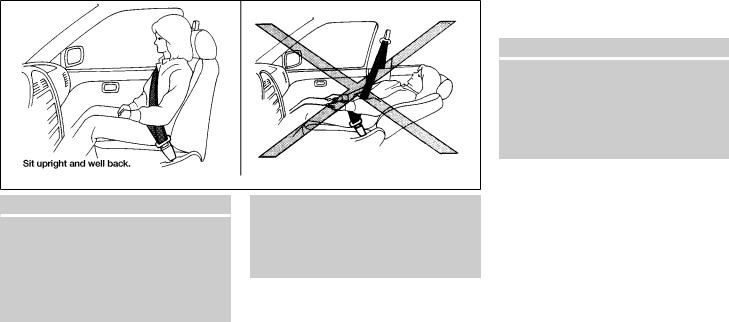
SEATS
ARS1152
WARNING
cDo not ride in a moving vehicle when the seatback is reclined. This can be dangerous. The shoulder belt will not be against your body. In an accident, you could be thrown into it and receive neck or other serious injuries. You could also slide under the lap belt and receive serious internal injuries.
cFor the most effective protection when the vehicle is in motion, the seat should be upright. Always sit well back in the seat and adjust the seat properly. See “Precautions on Seat Belt Usage” later in this section.
FRONT MANUAL SEAT ADJUSTMENT — PASSENGER SIDE
WARNING
c Do not adjust the driver’s seat while driving so full attention may be given to vehicle operation. The seat may move suddenly and could cause loss of control of the vehicle.
cAfter adjustment, gently rock in the seat to make sure it is securely locked.
1-2 Safety—Seats, seat belts and supplemental air bags

LRS0244
Forward and backward
Pull the lever up and hold it while you slide the seat forward or backward to the desired position. Release the lever to lock the seat in position.
WARNING
After adjustment, gently rock in the seat to make sure it is securely locked.
LRS0245
Reclining
To recline the seatback, pull the lever up and lean back. To bring the seatback forward, pull the lever up and lean your body forward. Release the lever to lock the seatback in position.
The reclining feature allows adjustment of the seatback for occupants of different sizes to help obtain proper seat belt fit (see “Precautions on seat belt usage” later in this section). Also, the seatback can be reclined to allow occupants to rest when the vehicle is stopped.
Safety—Seats, seat belts and supplemental air bags 1-3
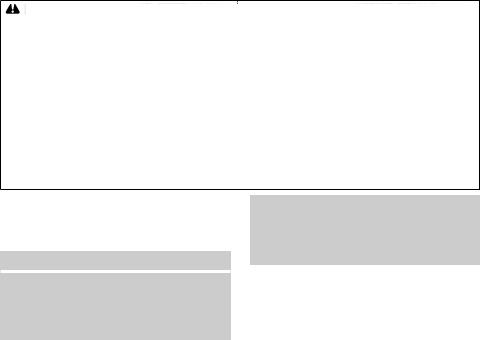
WRS0276
FRONT POWER SEAT ADJUSTMENT (for driver’s seat and if so equipped for passenger’s seat)
WARNING
c Do not adjust the driver’s seat while driving so full attention may be given to vehicle operation. The seat may move suddenly and could cause loss of control of the vehicle.
cDo not leave children unattended inside the vehicle. They could unknowingly activate switches or controls. Unattended children could become involved in serious accidents.
Operating tips
cThe power seat motor has an auto-reset overload protection circuit. If the motor stops during operation, wait 30 seconds, then reactivate the switch.
cDo not operate the power seat switch for a long period of time when the engine is off. This will discharge the battery.
1-4 Safety—Seats, seat belts and supplemental air bags
See “Automatic drive positioner (if so equipped)” in “Pre-driving checks and adjustments” for automatic drive positioner operation.
Forward and backward
Moving the switch forward or backward will slide the seat forward or backward to the desired position.
Reclining
Move the recline switch backward until the desired angle is obtained. To bring the seatback forward again, move the switch forward and move your body forward. The seatback will move forward.
The reclining feature allows adjustment of the seatback for occupants of different sizes to help obtain proper seat belt fit (see “Precautions on seat belt usage” later in this section). Also, the seatback can be reclined to allow occupants to rest when the vehicle is stopped.

WRS0277
Seat lifter (driver’s seat)
Push the front or rear end of the switch up or down to adjust the angle and height of the seat cushion.
LRS0278
Lumbar support (driver’s seat)
The lumbar support feature provides lower back support to the driver. Move the lever up or down to adjust the seat lumbar area.
WRS0369
2ND ROW CAPTAIN’S CHAIR ADJUSTMENT (if so equipped)
Reclining
To recline the seatback, pull up on the lever and lean back.
The recline feature allows adjustment of the seat back for occupants of different sizes to help obtain proper seat belt fit (see “Precautions on seat belt usage” later in this section). Also, the seatback can be reclined to allow occupants to rest when the vehicle is stopped.
Safety—Seats, seat belts and supplemental air bags 1-5

WARNING
cAfter adjustment, gently rock in the seat to make sure it is securely locked.
cDo not ride in a moving vehicle when the seatback is reclined. This can be dangerous. The shoulder belt will not be against your body. In an accident, you could be thrown into it and receive neck or other serious injuries. You could also slide under the lap belt and receive serious internal injuries.
cFor the most effective protection when the vehicle is in motion, the seat should be upright. Always sit well back in the seat and adjust the seat belt properly. See “Precautions on seat belt usage” later in this section.
WRS0415
Tip up for easy entry to the 3rd row
The 2nd row captain’s chairs can be tipped forward for easy entry or exit from the 3rd row bench seat. To enter the 3rd row s1 lift up on the latch located on the upper corner of the seatback on the 2nd row captain’s chair and fold the seatback forward at an angle over the seat base. This will release the back of the seat so it may be tipped forward.
LRS0372
Then s2 lift up on the lower corner of the seat base and tip the 2nd row captain’s chair forward. To exit the 3rd row bench seat lift up on the same latch and fold the seatback forward onto the seat base. Then lift up on the seat base and tip it forward.
1-6 Safety—Seats, seat belts and supplemental air bags

WRS0369
Outboard seats
2ND ROW BENCH SEAT ADJUSTMENT (if so equipped)
Reclining
To recline the seatback, pull up on the lever and lean back.
The recline feature allows adjustment of the seat back for occupants of different sizes to help obtain proper seat belt fit (see “Precautions on seat belt usage” later in this section). Also, the seatback can be reclined to allow occupants to rest when the vehicle is stopped.
WARNING
cAfter adjustment, gently rock in the seat to make sure it is securely locked.
cDo not ride in a moving vehicle when the seatback is reclined. This can be dangerous. The shoulder belt will not be against your body. In an accident, you could be thrown into it and receive neck or other serious injuries. You could also slide under the lap belt and receive serious internal injuries.
cFor the most effective protection when the vehicle is in motion, the seat should be upright. Always sit well back in the seat and adjust the seat belt properly. See “Precautions on seat belt usage” later in this section.
WRS0414
Tip up for easy entry to the 3rd row
The outboard seating positions on the 2nd row bench seat can be tipped forward for easy entry or exit from the 3rd row bench seat. To enter the 3rd row s1 lift up on the latch located on the upper corner of the seatback on the 2nd row bench seat and fold the seatback forward at an angle over the seat base. This will release the back of the seat so it may be tipped forward.
Safety—Seats, seat belts and supplemental air bags 1-7

LRS0331
Then s2 lift up on the lower corner of the seat base and tip the outboard seating position of the 2nd row bench seat forward. To exit the 3rd row bench seat lift up on the same latch and fold the seatback forward onto the seat base. Then lift up on the seat base and tip it forward.
WARNING
Head restraints should be adjusted properly as they may provide significant protection against injury in an accident. Do not remove them. Check the adjustment after someone else uses the seat.
LRS0286
HEAD RESTRAINT ADJUSTMENT
To raise the head restraint, pull it up. To lower, push and hold the lock knob and push the head restraint down.
The head restraints on the 2nd and 3rd row seats are removable. The front seat head restraints are not removable.
1-8 Safety—Seats, seat belts and supplemental air bags
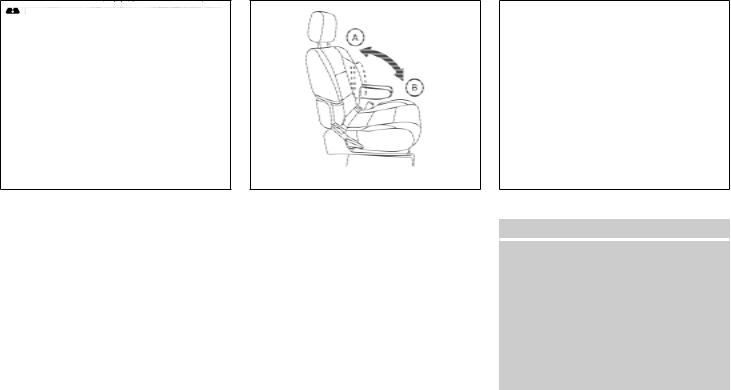
WRS0134
Adjust the head restraint so the center is level with the center of your ears.
WRS0368
ARMRESTS
To use the armrests, pull them down to the resting position.
sA Stowed position sB Resting position
Adjustable driver’s seat armrest (if so equipped)
To use the adjustable driver seat armrest, pull it down to the resting position. Adjust the armrest to the desired position by raising the armrest to the desired height and releasing the armrest. To readjust the armrest to a lower position, raise the armrest to the stowed position, then pull it to the resting position and adjust to the desired height.
LRS0341
FLEXIBLE SEATING
WARNING
cNever allow anyone to ride in the cargo area or on the rear seats when they are in the fold-down position. In a collision, people riding in these areas without proper restraints are more likely to be seriously injured or killed.
cDo not allow people to ride in any area of your vehicle that is not equipped with seats and seat belts. Be sure everyone in your vehicle is in a seat and using a seat belt properly.
Safety—Seats, seat belts and supplemental air bags 1-9

cDo not fold down the rear seats when occupants are in the rear seat area or any luggage is on the rear seats.
cHead restraints should be adjusted properly as they may provide significant protection against injury in an accident. Always replace and adjust them properly if they have been removed for any reason.
cIf the head restraints are removed for any reason, they should be securely stored to prevent them from causing injury to passengers or damage to the vehicle in case of sudden braking or an accident.
cWhen returning the seatbacks to the upright position, be certain they are completely secured in the latched position. If they are not completely secured, passengers may be injured in an accident or sudden stop.
cProperly secure all cargo to help prevent it from sliding or shifting. Do not place cargo higher than the seatbacks. In a sudden stop or collision, unsecured cargo could cause personal injury.
Folding the front passenger’s seatback
To fold the front passenger’s seatback flat for extra storage length when transporting long items:
s1 Slide the seat to the rear-most position. Lift up on the recline lever, located on the outside edge of the seat, and fold the seatback forward as far as it will go. Then lift up on the latch located on the upper corner of the seatback to release the back of the seat.
LRS0342
s2 Once the seatback is released it will enable you to fold the front passenger seatback flat over the seat cushion.
3. To return the front passenger’s seat to a seating position lift up on the seatback and push it up to an upright position. Then pull up on the recline lever and lean the seatback to a proper seating position. Release the lever to lock the seatback in position.
1-10 Safety—Seats, seat belts and supplemental air bags
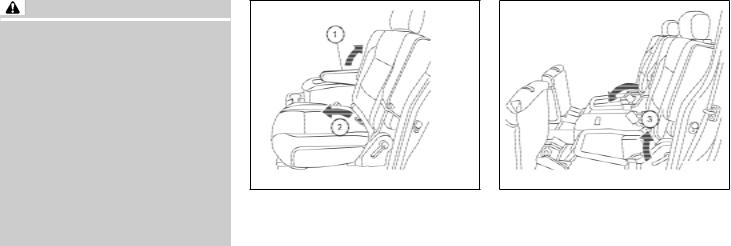
WARNING
cIf you fold the front passenger’s seatback flat forward to carry longer objects, be sure this cargo is properly secured and not near an air bag. In a crash, an inflating air bag might force that object toward a person. This could cause severe injury or even death. Secure objects away from the area in which an air bag would inflate. See “Precautions on supplemental restraint system” later in this section.
cNever allow anyone to ride in the cargo area or on the front passenger’s seat when it is in the fold-down position. Use of these areas by passengers could result in serious injury in an accident or sudden stop.
LRS0332
Folding the 2nd row captain’s chairs (if so equipped)
To fold the 2nd row captain’s chairs flat for maximum cargo hauling:
s1 Raise the armrest to the stowed position. Remove the 2nd row center console, see “Console removal” in the “Instruments and controls” section of this Owner’s Manual.
s2 Pull the strap forward, located in the center of the seat cushion, and fold the seat cushion toward the front of the vehicle.
LRS0333
s3 Then lift up on the recline lever to fold the seatback flat forward.
Safety—Seats, seat belts and supplemental air bags 1-11

LRS0334
s4 There is a carpet panel flap that can be folded toward the back of the vehicle.
LRS0335
s5 The carpet panel flaps provide a level cargo floor when the 3rd row seats are also folded flat. Reverse this process to return the 2nd row captain’s chairs to a seating position.
Make sure to properly raise the seatback to an upright position and push the seat cushion down into place.
LRS0336
Folding the 2nd row bench seat (if so equipped)
To fold the 2nd row bench seat flat for maximum cargo hauling:
s1 Pull the strap forward, located in the center of each seat cushion, and fold each seat cushion toward the front of the vehicle.
1-12 Safety—Seats, seat belts and supplemental air bags

LRS0337
s2 Then lift up on the recline lever on the side of the outboard seats to fold the outboard seatbacks flat. To fold the center seatback flat, pull up on the strap on the edge of the center seat cushion and fold the seatback toward the front of the vehicle.
LRS0338
s3 There is a carpet panel flap on the back of each seat that can be folded toward the back of the vehicle
LRS0339
s4 The carpet panel flap provides a level cargo floor when the 3rd row seats are also folded flat.
5.To return the outboard 2nd row bench seats to a seating position reverse the process for the outboard seats.
6.To return the center seat to a seating position, lift up on the pull strap on the back of the seat base while lifting on the seatback. Then push the seat cushion back into place.
Make sure to properly raise the seatback to an upright position and push the seat cushion down into place.
Safety—Seats, seat belts and supplemental air bags 1-13
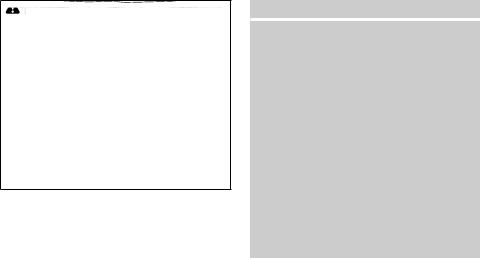
LRS0374
Folding the 3rd row bench seat
To fold the 3rd row bench seat flat for maximum cargo capacity:
Disconnect and secure the center seat belt and tongues into the retractor base. See “Stowing rear center seat belt” later in this section. Then pull up on the latch located in the center of the seatback and fold it forward over the seat base.
To return the 3rd row bench seat to a seating position unfold the seatback and push it back until it latches into position.
WARNING
cWhen returning the seatbacks, be sure to attach the rear center seat belt connector.
cDo not unfasten the rear center seat belt connector except when folding down the rear seat.
cWhen attaching the rear center seat belt connector, be certain that the seatbacks are completely secured in the latched position and the rear center seat belt connector is completely secured.
cIf the rear center seat belt connector and the seatbacks are not secured in the correct position, serious personal injury may result in an accident or sudden stop.
1-14 Safety—Seats, seat belts and supplemental air bags
SUPPLEMENTAL RESTRAINT SYSTEM
PRECAUTIONS ON SUPPLEMENTAL RESTRAINT SYSTEM
This Supplemental Restraint System (SRS) section contains important information concerning the driver and passenger supplemental front air bags (NISSAN Advanced Air Bag System), supplemental side air bags, curtain side-impact and rollover air bags and pre-tensioner seat belts.
Supplemental front impact air bag system:
The NISSAN advanced air bag system can help cushion the impact force to the head and chest of the driver and front passenger in certain frontal collisions.
Supplemental side-impact air bag system (if so equipped): This system can help cushion the impact force to the chest area of the driver and front passenger in certain side impact collisions. The supplemental side air bag is designed to inflate on the side where the vehicle is impacted.
Supplemental curtain side-impact and rollover air bag system: This system can help cushion the impact force to the head of occupants in front and rear outboard seating positions in certain side impact or rollover collisions. In a side impact, the curtain air bags are designed to inflate on the side where the vehicle is impacted.
